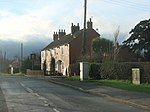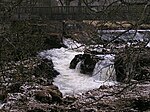Kelfield, North Yorkshire
Civil parishes in North YorkshireSelby DistrictUse British English from December 2014Villages in North Yorkshire

Kelfield is a small village and civil parish in the Selby district of North Yorkshire, England. It was historically part of the East Riding of Yorkshire until 1974.The village is situated on the northern bank of the River Ouse, equidistant between the villages of Riccall, Cawood and Stillingfleet, approximately 5 miles (8 km) north-west of Selby.
Excerpt from the Wikipedia article Kelfield, North Yorkshire (License: CC BY-SA 3.0, Authors, Images).Kelfield, North Yorkshire
Main Street,
Geographical coordinates (GPS) Address Nearby Places Show on map
Geographical coordinates (GPS)
| Latitude | Longitude |
|---|---|
| N 53.838468 ° | E -1.100492 ° |
Address
Main Street
Main Street
YO19 6RG
England, United Kingdom
Open on Google Maps










